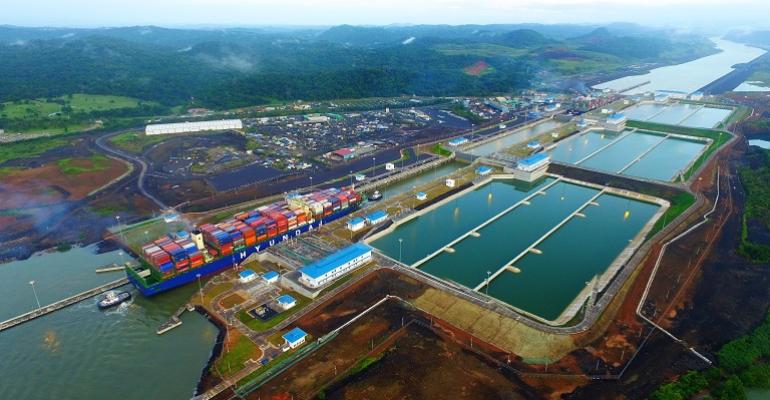Its gradual implementation will begin in January 2023 until 2025, “giving customers time to sign their contracts considering the structure,” Panama Canal Authority (ACP) Administrator Ricaurte Vasquez told Seatrade.
“By making these changes, we recognise the value of extending greater predictability today, while renewing our commitment to improving customer experience,” said Vasquez
The new structure is an invitation to customers to consolidate cargo in bigger ships through the neo-panamax locks, which will release capacity and use less water. “From all the global maritime routes, Panama is the only one using freshwater, any of the Canal’s decision today are geared towards improving fresh-water utilisation,” explains Vasquez.
The proposed toll structure will reduce the number of tariffs from 430 to less than 60. The new system has three components: A fixed price; the vessel’s capacity and dynamic pricing.
*The Panama Canal is eliminating toll bands and introducing simplified tariffs according to the locks used, as well as the vessel type and size category. Tolls will be determined by two components:
*A fixed tariff per transit, according to the locks used and the vessel size category (Regulars, Supers, and neo-panamax), that will remain in place until year 2025.
Neo-panamax locks: All neo-panamax vessels going through the neo-panamax locks will pay a fixed tariff of $300,000.
*Neo-panamax Container vessels will pay $200,000 if less than 10,000 teus, $300,000 if over 10,000 teus.
*Panamax vessels transiting through the neo-panamax locks will pay $60,000 if Regular and $100, 000 if Super.
For some types and sizes of vessels, these categories are further divided to avoid exceeding the value the Canal provides to customers.
Replacement of tariffs for vessels in ballast: The Panama Canal is reducing complex tariffs for vessels in ballast that are not consistent with the value provided to customers. Under the proposal, vessels transiting in ballast will pay a percent of the regular laden toll, independent of the market segment, and the special return trip tariffs for container and liquefied natural gas (LNG) vessels will be phased out.
*Since January 2022, Cruise ships are paying according to capacity in PC-UMS tonnage.
Modifying the loyalty programme: The Canal seeks to simplify the loyalty program, created in 2016 for container vessels, by reducing the number of categories from six to one. The plan is to have one loyalty level applicable to customers deploying more than 1.5m teus per year.
Customers have responded with enthusiasm to the dynamic programme started in FY2021 which gives a “real market value to the route,” Vasquez told Seatrade. “We are going to review the booking system for more simplification and respond to the market,” he said.
“Our ability to maintain a safe, reliable route amid rising climate and supply chain challenges hinges on making strategic investments and adjustments to our business structure today,” said Panama Canal’s Vice President of Finance, Victor Vial. “Ground-breaking investments are already underway to capitalise on these changes and strengthen the Panama Canal’s role in connecting smarter, more sustainable supply chains.”
Along with the proposed changes to its toll structure, the Panama Canal is planning to invest an estimated $2 billion in water projects, and will pursue additional investments in digital transformation, infrastructure maintenance, as well as new infrastructure and equipment to become carbon neutral by 2030.
Copyright © 2024. All rights reserved. Seatrade, a trading name of Informa Markets (UK) Limited.
Add Seatrade Maritime News to your Google News feed.  |

